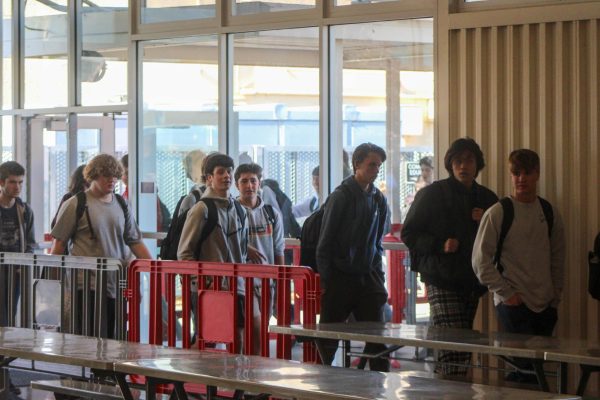During the Tamalpais Union High School District (TUHSD) board meeting on Tuesday, Nov. 14, trustees unanimously approved the inclusion of a new $517 million school funding measure on the March 2024 presidential primary election ballot. With a 4-0 vote in favor, trustee Kevin Saavedra was not present at the meeting.

Based on the district’s median property value of $1.1 million, the proposed bond would result in an additional $330 in annual property taxes. A recent survey conducted by Godbe Research indicated that approximately 60 percent of local voters support the measure, exceeding the 55 percent threshold required for passage.
The bond came about as the result of an extensive years-long facilities planning process, culminating in a Facilities Master Plan (FMP). Finalized in April 2022, the FMP prioritizes repairs and improvements to upgrade aging classrooms, labs, buildings and infrastructure across the district’s five 25 to 100-year-old campuses.
While most participants from the public expressed positive views on the bond, four attendees opposed the measure. One concern raised was the timing of the bond issuance with interest rates at the highest level in 15 years. This observation was countered by district Assistant Superintendent for Business Operations Corbett Elsen who highlighted the potential for future refinancing.
“We anticipate there could be opportunities in the future to refinance these bonds to lower the amount for taxpayers like we’ve done in the past,” Elsen said. “We’ve refunded our past bonds four times and saved taxpayers $24 million.”
Elsen estimates about $175 in taxes will drop off the median homeowner’s bill in the next 2-5 years as a result of these refinancings, partially offsetting the cost of this new bond.
A second objection was the cost of Redwood’s new common eating area (CEA). Some parents commented that a new CEA is a nice-to-have luxury rather than a necessity. Mimi Willard, president of the Coalition of Sensible Taxpayers-Marin, complained it would be one of the largest expenditures of the FMP – at $104 million – even though it was not one of the top priorities.
Addressing these objections, Elsen explained the need for an updated space due to the 250 percent increase in student participation in California’s universal meal plan. Elsen noted many students go to Redwood’s CEA for meals yet there is no place for them to eat.

“Our CEA has gone from an eating area to a queuing line,” Elsen said. “There is no space inside the cafeteria whatsoever [for students] to sit together and enjoy their meals.”
Redwood student trustee Kiera Lensing supported Elsen’s observation.
“There is no place to eat lunch inside [at Redwood]. When it rains, you have to sit in the gym on the floor or on the hallway floor,” Lensing said.
Elsen justified the need for a new CEA by also highlighting the impracticality and costliness of renovating the outdated kitchen, food preparation, and refrigeration facilities.
“The best thing to do is to build a new kitchen and to replace the CEA with a student commons – a source of gathering,” Elsen said.
Another objection focused on the bond’s size. Although the issued amount will be $517 million, critics including Willard argued the total cost over its life would exceed $1 billion. One board member disagreed, comparing it to a home mortgage.
“When you take out a $1 million mortgage on your house, it’s not described to you as a $2 million mortgage,” said the trustee. “This bond works the same way – it is a $517 million bond.”
Despite objections, the majority of meeting participants praised the bond for its potential to address fundamental issues, including uncomfortable classrooms, insufficient sports facilities, decrepit buildings and lack of common areas for students. The bond will appear on the March 5, 2024 ballot.







![“[The Scotty Lapp Memorial Skatepark signifies that] Scotty’s energy, fun vibes and spirit will live on forever,” Jason Lapp said.](https://redwoodbark.org/wp-content/uploads/2025/03/346E3938-2C25-4CBB-9D6B-0ED4BD4A242A_1_105_c.jpeg)


